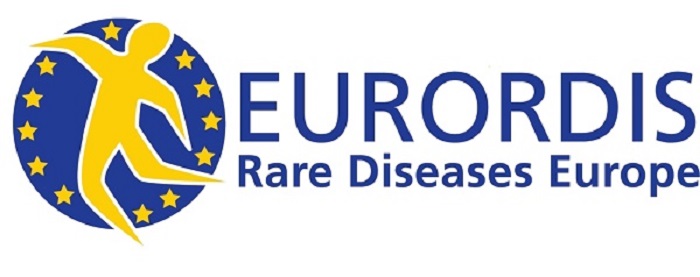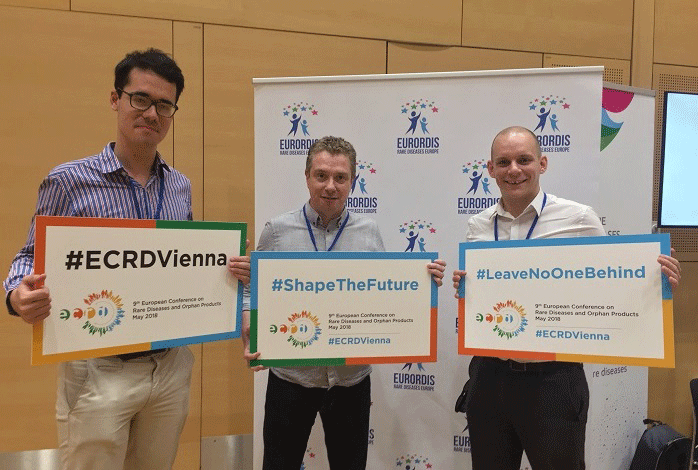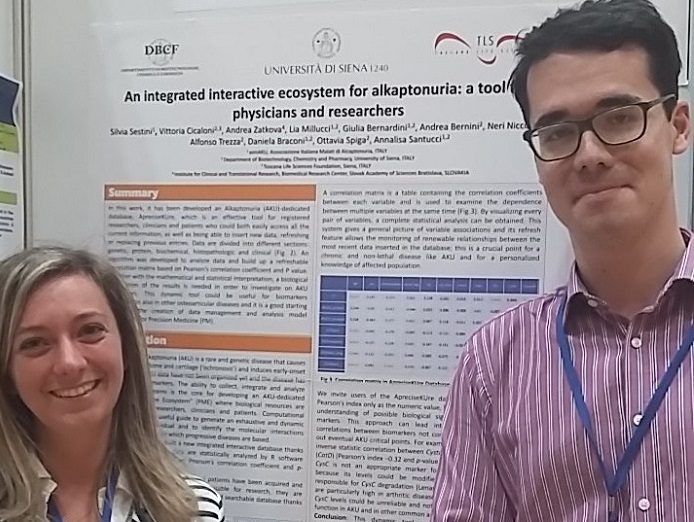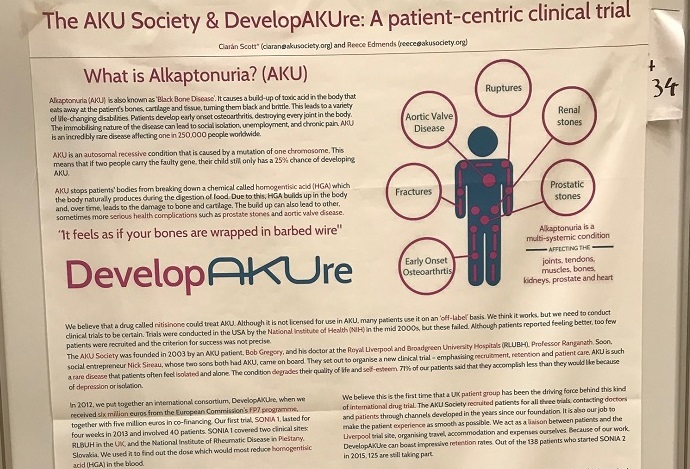A rare disease is defined by the European Union (EU) as affecting fewer than one in 2,000 people. Considered together, though, rare diseases are common. Between six and eight per cent of the EU population has one of the 7,000 known rare diseases – that’s around 30 million Europeans.
No one country can fight rare diseases alone. That’s why EURORDIS – Rare Diseases Europe was founded in 1997. EURORDIS is an alliance of 804 rare disease patient groups from 69 countries. It represents the interests of rare disease patients in Europe. In particular, it lobbies the EU on patients’ behalf.

Since 2001, EURORDIS has organised the European Conference on Rare Diseases and Orphan Products every two years. This brings together scientists, doctors, charities, pharmaceutical companies and policy makers to discuss the future for rare disease research. The 2018 conference was held in Vienna on 10th-12th May. The AKU Society is a proud member of EURORDIS. Nick (CEO), Ciarán (Clinical Trials) and Reece (Admin. and Comms.) flew out for the conference.

In the shadow of Vienna’s iconic Riesenrad Ferris wheel, more than 900 people from 58 countries piled into the Messe Wien Exhibition and Congress Centre for the three-day event. We were told that policy makers care more about rare diseases than ever before. Twenty-four EU countries now have national strategic plans for rare diseases, up from four a decade ago. European Reference Networks have brought together doctors and scientists to share knowledge about rare diseases. We hope that in 2019 the EU will create a European Joint Programme Cofund for Rare Diseases. This will fund national research and translate it into results for patients.

We did some informal networking on the fringes of the conference, meeting old friends and making new contacts. In particular, we met AKU researchers from the University of Siena. Their cutting-edge research is shedding light on how AKU affects the body through a process called ‘ochronosis’, in which a toxic black pigment is deposited at points in the body. They have also built an AKU database, ApreciseKUre. This uses data from Italian AKU patients, who are recruited and supported by our Italian sister society AimAKU.

We displayed our poster in the exhibition hall. Called ‘The AKU Society and DevelopAKUre: A patient-centric clinical trial’, it told our story in clear and accessible language. Researchers, charities and representatives from the pharmaceutical industry were very interested. They wanted to know how we had put together DevelopAKUre, the international consortium running clinical trials into nitisinone, a possible treatment for AKU. They were especially impressed by our patient retention rate. Of the 138 patients who began our current trial, SONIA 2, in 2015, 125 are still taking part. We believe this is due to our close links with each patient.

We were also pleased to see how Rare Diseases International (RDI) had got on. RDI is a EURORDIS project which aims to become independent in 2019. It represents rare disease patients on the international level, and particularly to the United Nations (UN) and its agencies. Over the last few years, RDI has been lobbying hard, and it looks to be paying off. For the first time, rare diseases have been mentioned at the General Assembly of the World Health Organisation (WHO). The WHO director tweeted on Rare Disease Day (Feb 28th) that he welcomed further discussion with the rare disease community. RDI now aims to persuade the UN to pass a resolution recognising the need to help 350 million rare disease patients worldwide. The future is full of hope.
